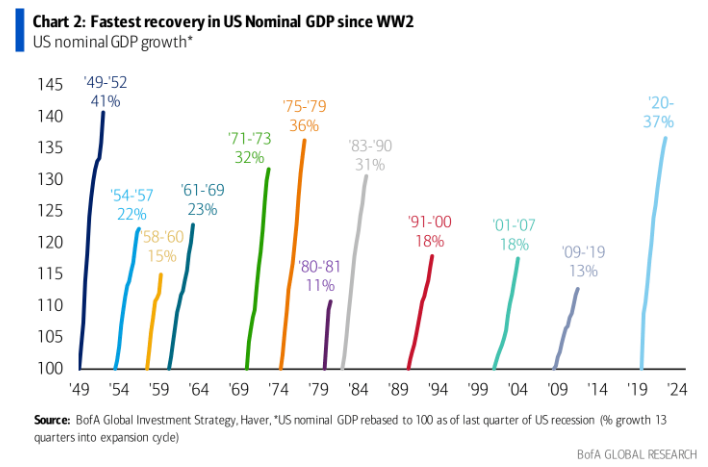The verdict is in — the old way of doing business is over. Join us at Inman Connect New York Jan. 23-25, when together we’ll conquer today’s market challenges and prepare for tomorrow’s opportunities. Defy the market and bet big on your future.
Mortgage rates are following Treasury yields down sharply this week, after Federal Reserve policymakers sounded less hawkish and refrained from raising rates Wednesday, and a new jobs report released Friday showed unemployment creeping up toward 4 percent and threatening to trigger a recession warning.
Yields on 10-year Treasury notes, a barometer for mortgage rates, dropped by nearly 20 basis points Friday after the release of the latest Employment Situation Summary from the Bureau of Labor Statistics, which showed unemployment hit 3.9 percent in October.
At 4.48 percent, Friday’s low for the 10-year Treasury yield was half a percentage point lower than the 16-year high of 5 percent registered on Oct. 23, and mortgage rates have fallen even more sharply, to levels not seen since September.
Mortgage rates retreat from 8 percent
Source: Mortgage News Daily
Mortgage News Daily’s lender survey showed rates on 30-year fixed-rate mortgages falling 15 basis points Friday, to 7.36 percent, down 67 basis points from a 2023 high of 8.03 percent registered on Oct. 19.
It was the fourth consecutive decline in the Mortgage News Daily index this week, with even bigger drops registered on Wednesday (19 basis points) and Thursday (18 basis points) bringing rates back down closer to 7 percent than 8 percent.
The unemployment rate is rising because the labor force is expanding faster than employers are creating new jobs, Pantheon Macroeconomics Chief Economist Ian Shepherdson said in a note to clients.
Unemployment trending up
Both the unemployment rate, at 3.9 percent, and the number of unemployed persons, at 6.5 million, changed little from September to October. But since their recent lows in April, these measures are up by 0.5 percentage points and 849,000 respectively, the Bureau of Labor Statistics noted.

Ian Shepherdson
Looking at the longer-term trend, the unemployment rate is “creeping higher and is on course to breach the 4.0 percent mark soon,” Shepherdson noted. “That would represent a half-point increase from the cycle low; if sustained for three months, this will trigger the Sahm Rule, which notes that every time unemployment rises by a half-point, the NBER [National Bureau of Economic Research] subsequently declares that the economy was in recession at that time.”
Economists at Pantheon see a “decent chance” the Sahm Rule won’t apply in the latest cycle because rising unemployment is being driven by rapid labor force growth rather than falling employment.
“But a rising unemployment for any reason will increase the pressure on the Fed to forego further tightening,” Shepherdson said. “More importantly, it will push down the Fed’s expectations for future wage growth and, hence, inflation.”
The bottom line is that the latest jobs data reduces the chance that the Fed will hike rates at its Dec. 13 meeting, although policymakers will be looking at the November jobs numbers and two CPI reports due before then, Shepherdson said.
“We expect no hike; the next move is likely to be an easing next spring,” he concluded.
Futures markets tracked by the CME FedWatch Tool show investors agree with that take. On Thursday, futures markets predicted a 19.8 percent chance of a Dec. 13 Fed rate hike. On Friday, futures markets were pricing in a 99.5 percent chance that the Fed — which last hiked rates in July — will refrain from hiking rates next month.
Futures markets predict rates will be lower in the spring

Futures markets tracked by the CME FedWatch Tool on Friday predicted a 49.1 percent chance that by May 1, the Fed will have lowered its target for the federal funds rate by 25 basis points, and a 15.2 percent chance that it will bring rates down by 50 basis points. Futures markets see a 32.8 percent chance that the federal funds rate will remain at the current target of 5.25 percent to 5.50 percent.
More importantly for spring homebuyers, futures markets on Friday predicted a 64 percent chance that the Fed will bring rates down by 25 to 50 basis points by May 1, up from 43 percent Thursday.

Doug Duncan | Photo credit: Fannie Mae
Fannie Mae Chief Economist Doug Duncan noted that wages growth continues to decelerate from 2022 peaks, lessening the inflationary pressures present in the economy.
“Overall, today’s report shows a healthy but slowing labor market, and, especially given the decelerating job growth figures, this is not a report that we would consider consistent with continued robust inflationary pressures,” Duncan said in a statement.
Mortgage rates retreat
Rates on 30-year fixed-rate conforming mortgages averaged 7.58 percent Thursday, according to daily rate lock data tracked by the Optimal Blue Mortgage Market Indices.
That’s down from a 2023 peak of 7.83 percent registered Oct. 25 — the highest rate Optimal Blue has recorded for conforming loans in records going back to 2017. Freddie Mac records dating to 1970 show mortgage rates last week hit levels not seen since November 2000.
Get Inman’s Mortgage Brief Newsletter delivered right to your inbox. A weekly roundup of all the biggest news in the world of mortgages and closings delivered every Wednesday. Click here to subscribe.
Email Matt Carter
















